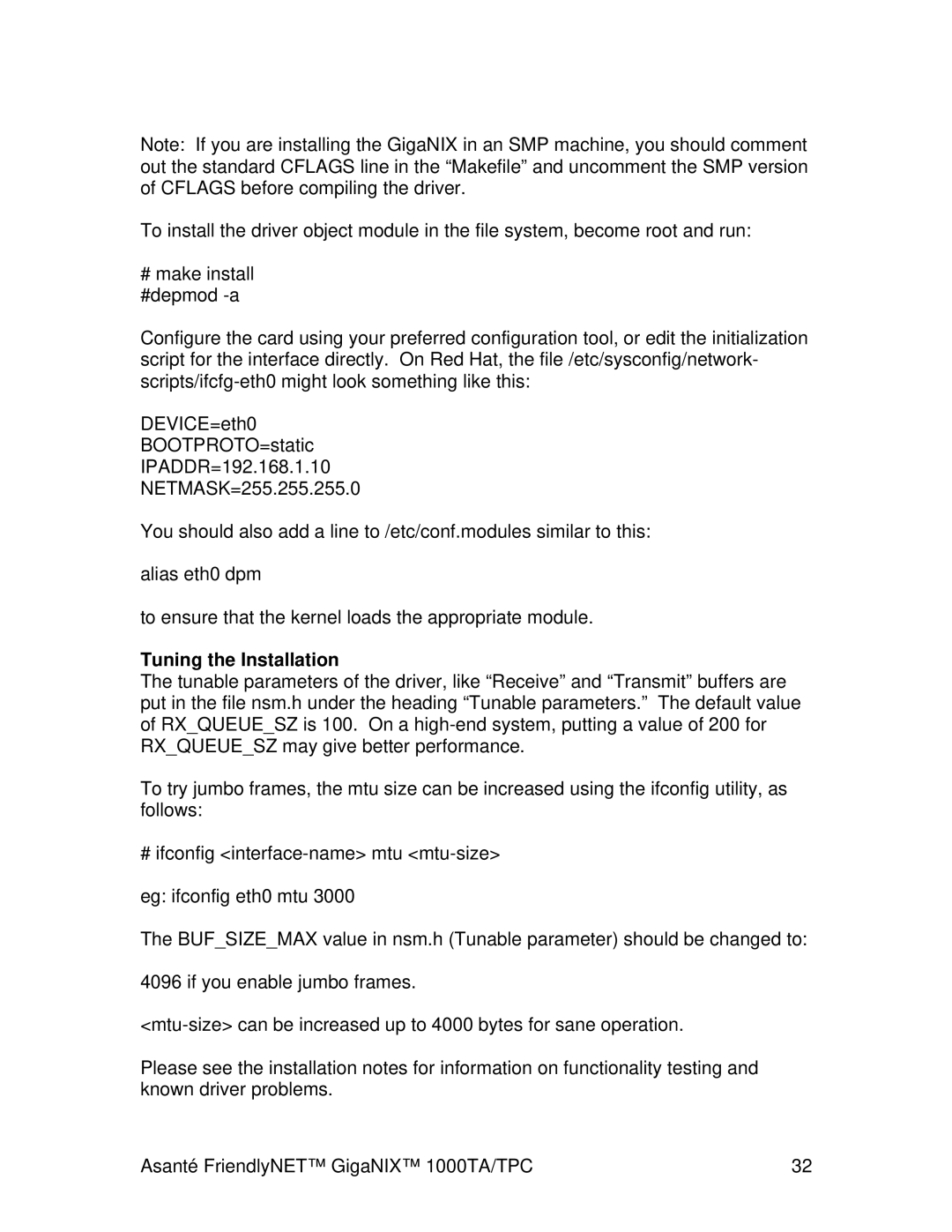Note: If you are installing the GigaNIX in an SMP machine, you should comment out the standard CFLAGS line in the “Makefile” and uncomment the SMP version of CFLAGS before compiling the driver.
To install the driver object module in the file system, become root and run:
#make install #depmod
Configure the card using your preferred configuration tool, or edit the initialization script for the interface directly. On Red Hat, the file /etc/sysconfig/network-
DEVICE=eth0
BOOTPROTO=static
IPADDR=192.168.1.10
NETMASK=255.255.255.0
You should also add a line to /etc/conf.modules similar to this:
alias eth0 dpm
to ensure that the kernel loads the appropriate module.
Tuning the Installation
The tunable parameters of the driver, like “Receive” and “Transmit” buffers are put in the file nsm.h under the heading “Tunable parameters.” The default value of RX_QUEUE_SZ is 100. On a
To try jumbo frames, the mtu size can be increased using the ifconfig utility, as follows:
#ifconfig
The BUF_SIZE_MAX value in nsm.h (Tunable parameter) should be changed to: 4096 if you enable jumbo frames.
Please see the installation notes for information on functionality testing and known driver problems.
Asanté FriendlyNET™ GigaNIX™ 1000TA/TPC | 32 |
